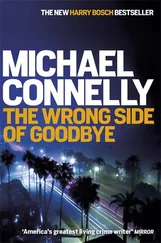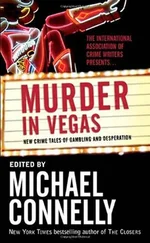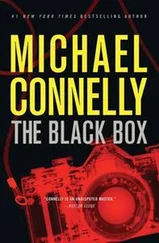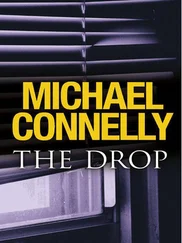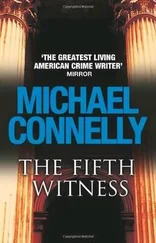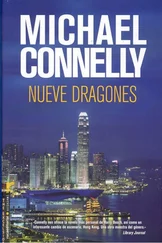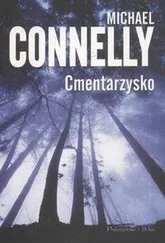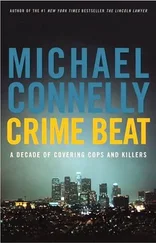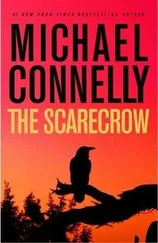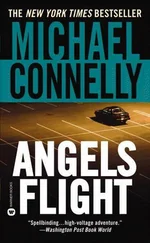Michael Connelly - Cielo Azul
Здесь есть возможность читать онлайн «Michael Connelly - Cielo Azul» весь текст электронной книги совершенно бесплатно (целиком полную версию без сокращений). В некоторых случаях можно слушать аудио, скачать через торрент в формате fb2 и присутствует краткое содержание. Жанр: Триллер, на английском языке. Описание произведения, (предисловие) а так же отзывы посетителей доступны на портале библиотеки ЛибКат.
- Название:Cielo Azul
- Автор:
- Жанр:
- Год:неизвестен
- ISBN:нет данных
- Рейтинг книги:3 / 5. Голосов: 1
-
Избранное:Добавить в избранное
- Отзывы:
-
Ваша оценка:
- 60
- 1
- 2
- 3
- 4
- 5
Cielo Azul: краткое содержание, описание и аннотация
Предлагаем к чтению аннотацию, описание, краткое содержание или предисловие (зависит от того, что написал сам автор книги «Cielo Azul»). Если вы не нашли необходимую информацию о книге — напишите в комментариях, мы постараемся отыскать её.
Cielo Azul — читать онлайн бесплатно полную книгу (весь текст) целиком
Ниже представлен текст книги, разбитый по страницам. Система сохранения места последней прочитанной страницы, позволяет с удобством читать онлайн бесплатно книгу «Cielo Azul», без необходимости каждый раз заново искать на чём Вы остановились. Поставьте закладку, и сможете в любой момент перейти на страницу, на которой закончили чтение.
Интервал:
Закладка:

Michael Connelly
Cielo Azul
On the way up, the car’s air conditioner gave up shortly after Bakersfield. It was September and hot as I pushed through the middle of the state. Pretty soon I could feel my shirt start to stick to the vinyl seat. I pulled off my tie and unbuttoned my collar. I didn’t know why I had put a tie on in the first place. I wasn’t on the clock and I wasn’t going anywhere that required a tie.
I tried to ignore the heat and concentrate on how I would try to handle Seguin. But that was like the heat. I knew there was no way to handle him. Somehow, it had always been the other way around. Seguin had the handle on me, made my shirt stick to my back. One way or the other that would end on this trip.
I turned my wrist on the steering wheel and checked the date on my Timex. Exactly twelve years since the day I had met Seguin. Since I had looked into the cold green eyes of a killer.
The case began on Mulholland Drive, the winding snake of a road that follows the spine of the Santa Monica Mountains. A group of high schoolers had pulled off the road to drink their beer and look down upon the smoggy city of dreams. One of them spotted the body. Nestled among the mountain brush and the beer cans and tequila bottles tossed down by past revelers, the woman was naked, her arms and legs stretched outward in some sort of grotesque display of sex and murder.
The call went to me and my partner, Frankie Sheehan. At the time we worked out of the LAPD’s Robbery-Homicide Division.
The crime scene was treacherous. The body was snagged on an incline with a better than sixty-degree grade. One slip and a person could tumble all the way down the mountainside, maybe end up in somebody’s hot tub down below or on somebody’s concrete patio. We wore jumpsuits and leather harnesses and were lowered down to the body by firemen from the 58th Battalion.
The scene was clean. No clothes, no ID, no physical evidence, no clues but the dead woman. We didn’t even find any fibers that were going to be useful. This was unusual for a homicide.
I studied the victim closely and realized she was barely a woman-probably still a teenager. Mexican, or of Mexican descent, she had brown hair, brown eyes and a dark complexion. I could tell that in life she had been beautiful to look at. In death she was heartbreaking. My partner always said the most dangerous women were the ones like her. Beautiful in life, heartbreaking in death. They could haunt you, stick with you even if you found the monster that took everything from her.
She had been strangled, the indentations of her killer’s thumbs clear on her neck, the petechial hemorrhaging putting a murderous rouge around her eyes. Rigor mortis had come and gone. She was loose. That told us she had been dead more than twenty-four hours.
The guess was that she had been dumped the night before, under cover of darkness. That meant she had been lying dead somewhere else for twelve hours or more. That other place was the true crime scene. It was the place we needed to find.
When I turned the car inland toward the bay the air finally began to cool. I skirted the east side of the bay up to Oakland and then went across the bridge into San Francisco. Before crossing the Golden Gate I stopped for a hamburger at the Balboa Bar & Grill. I get to San Francisco two or three times a year on cases. I always eat at the Balboa. This time I ate at the bar, glancing occasionally up at the television to see the Giants playing in Chicago. They were losing.
But mostly I rolled the old case back and forth in my head. It was a closed case now and Seguin would never hurt another person again. Except himself. His last victim would be himself. But still the case stuck with me. A killer was caught, tried and convicted, and now stood to be executed for his crimes. But there was still an unanswered question that stuck with me. It was what put me on the road to San Quentin on my day off.
We didn’t know her name. Fingerprints from the body matched no prints contained in computerized records. Her description matched no description on an active missing persons case anywhere in Los Angeles County or on national crime computer systems. An artist’s rendering of her face put on the TV news and in the papers brought no calls from a loved one or an acquaintance. Sketches faxed to five hundred police agencies across the southwest and to the State Judicial Police in Mexico drew no responses. The victim remained unclaimed and unidentified, her body reposing in the refrigerator at the coroner’s office while Sheehan and I worked the case.
It was tough. Most cases start with the victim. Who that person was and where she lived becomes the center of the wheel, the grounding point. Everything comes from the center. But we didn’t have that and we didn’t have the true crime scene. We had nothing and we were going nowhere.
All that changed with Teresa Corazon. She was the deputy coroner assigned to the case officially known as Jane Doe # 90-91. While preparing the body for an autopsy she came across the lead that would take us first to McCaleb and then to Seguin.
Corazon found that the victim’s body had apparently been washed with an industrial strength cleaner before being discarded on the hillside. It was an attempt by the killer to destroy trace evidence. This in itself, however, was both a solid clue and trace evidence. The cleaning agent could help lead to the killer’s identity or help tie him to the crime.
However, it was another discovery made by Corazon that turned the case for us. While photographing the body the deputy coroner noticed an impression in the skin on the rear left hip. Post-mortem lividity indicated the blood in the body had settled on the left half, meaning the body had been lying on its left side in the time between the stilling of the heart and the dropping of the body down the hillside off of Mulholland. The evidence indicated that during the time that the blood settled the body had been lying on top of the object that left the impression on the hip.
Using angled light to study the impression, Corazon found that she could clearly see the number 1, the letter J and part of a third letter that could have been the upper left stem of an H, a K or an L.
“A license plate,” I said when she called me to the autopsy suite to view the discovery. “He put her down on a license plate.”
“Exactly, Detective Bosch,” said Corazon.
Sheehan and I quickly formed the theory that whoever had killed the woman with no name had hidden the body in the trunk of a car until it was nighttime and safe to take it up to Mulholland and dump it. After carefully cleaning the body the killer put it into the trunk of his car, mistakenly putting it down on part of a license plate that had been taken off the car and also placed in the trunk. That part of the theory was that the license plate had been removed and possibly replaced with a stolen plate as one more safety measure that would help the killer avoid detection if his car happened to be spotted by a suspicious passerby at the Mulholland overlook.
The skin impression gave no indication of what state issued the license plate. But the use of the Mulholland outlook gave us the idea that we were looking for someone familiar with the area, a local. We began with the California Department of Motor Vehicles and obtained a list of every car registered in Los Angeles County that carried a plate beginning 1JH, 1JK and 1JL.
The list contained over one thousand names of car owners. We then cut forty percent of those names by discounting the female owners. The remaining names were slowly fed into the National Crime Index computer and we came up with a list of thirty-six men with criminal records ranging from minor to the extreme.
Читать дальшеИнтервал:
Закладка:
Похожие книги на «Cielo Azul»
Представляем Вашему вниманию похожие книги на «Cielo Azul» списком для выбора. Мы отобрали схожую по названию и смыслу литературу в надежде предоставить читателям больше вариантов отыскать новые, интересные, ещё непрочитанные произведения.
Обсуждение, отзывы о книге «Cielo Azul» и просто собственные мнения читателей. Оставьте ваши комментарии, напишите, что Вы думаете о произведении, его смысле или главных героях. Укажите что конкретно понравилось, а что нет, и почему Вы так считаете.

